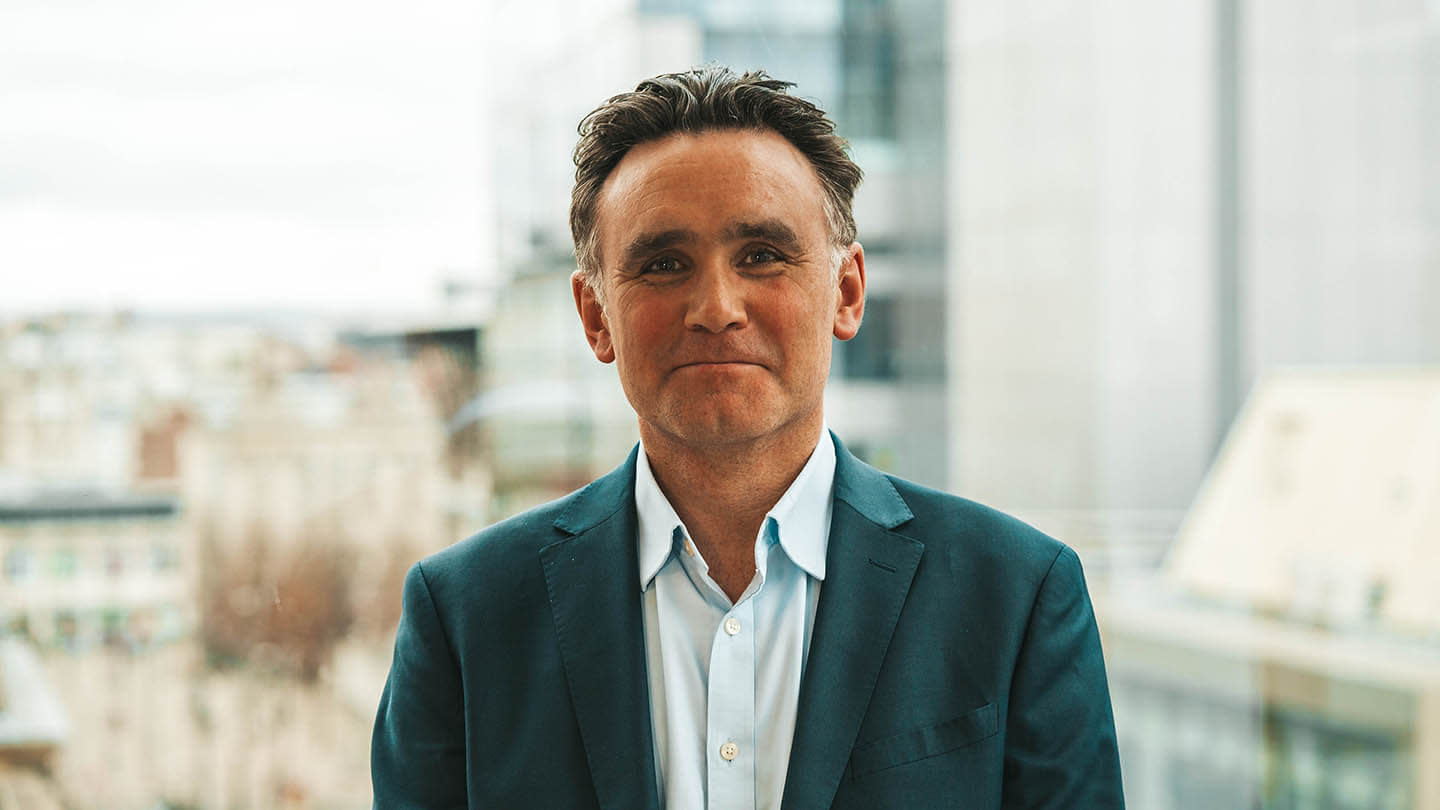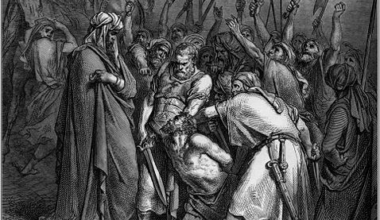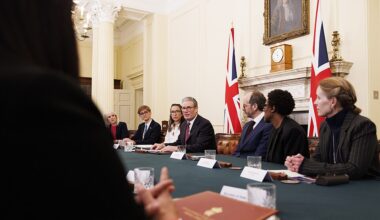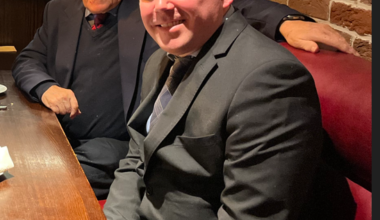‘Western governments are increasingly reaching into areas in which the interests of religious freedom and the rights of conscience were long thought no business of government.’ So tweeted Mark Coleridge, the Roman Catholic Archbishop of Brisbane, in 2018. His complaint was prompted by recommendations made by the Australian Royal Commission into Institutional Responses to Child Sex Abuse.
In 2017, after hearing years of evidence about the covering up of abuse in the Catholic church, the Commission proposed that priests should be legally required to report knowledge of child abuse to the statutory authorities. In particular, the Commission recommended that this reporting obligation should cover information obtained by a priest in the course of sacramental confession.
In the Catholic Church, the seal of the confessional places an absolute duty on priests not to disclose anything they hear from a penitent during the formal sacrament of penance. In church law, a priest who breaks that seal will automatically be excommunicated. So the mandatory reporting recommended by the Commission, and now being implemented in Australia, overrides what the Catholic Church regards as the inviolable seal of the confessional.
This is necessary, the Commission concluded, because of the ways in which the confessional has been used to protect and facilitate the abuse of children. This is something evidenced not only in the Commission’s hearings but in other studies; see for example The Dark Box: A Secret History of the Confession by the Catholic writer John Cornwell.
In the Archbishop’s view, however, this proposal amounted to an improper ‘attempt to renegotiate the church/state relationship’. Catholic priests, he maintained, would go to prison rather than comply with the law. When the Irish parliament legislated for mandatory reporting in 2012, with no confessional exemption, the Irish Catholic Church responded in a similar vein, advising priests to break the law.
The controversy over the seal of the confessional in clerical sex abuse cases has become something of a flashpoint for competing views of the relationship between church and state, and of the extent to which the state is entitled to limit the freedom of religion to protect children from abuse.
Controversies about religious freedom have doubtless existed as long as religion itself. But the abuse scandals which have overwhelmed many religious groups raise the question of religious freedom in a new way. Churches have shown themselves to be poor at protecting children, often concealing scandals and prioritising the protection of their own reputations. Given that churches seem to be incapable of self-policing, how far should the state intervene in religious settings to protect children who may be at risk? How is any intervention to be balanced against the right to religious freedom?
The fact that this is a relatively new controversy is not surprising. Child abuse has been happening in religious organisations for much longer than those organisations have admitted. But the exposure of abuse is much more recent. For instance, the worldwide clerical sex abuse scandal in the Catholic Church has only really been publicly visible since the 1980s. And the notion that children have rights to be protected against abuse is relatively recent too: the first child protection laws started to reach the statute book in the UK only in the late nineteenth century, and most date from the 1960s onwards. Certainly, the world’s monotheistic religions came into being hundreds if not thousands of years before anyone gave much thought to the rights of children.
In the debate about child protection versus religious freedom, the controversy over the seal of the confessional is just one source of friction; there are likely to be others. This became apparent in 2020, during hearings at the Independent Inquiry into Child Sexual Abuse in England and Wales (IICSA), which examined child protection in religious settings.
It was clear from those hearings that when it comes to safeguarding, children are at risk in many religious settings, but that these settings are also amongst the least regulated by the state. As one lawyer in IICSA observed, religious settings are ‘less regulated than donkey sanctuaries.’ State intervention to protect children might involve mandatory reporting, so that any instance of suspected abuse would be passed to the statutory authorities for investigation. It might also involve greater state oversight of religious bodies: inspection and regulation to ensure that child safeguarding rules are adhered to.
However, in order to regulate a setting, with the aim of protecting children within it, a regulatory body like Ofsted or a local authority has to know that such a setting exists. In practice, this could probably only be done through a registration requirement – with the law stipulating that any religious activity involving children must be registered with a regulatory body.
For the Evangelical Alliance, which represents thousands of evangelical Christian churches across the UK, such a registration system could be ‘deeply problematic’ because it could become a ‘de facto requirement to register with the state to practice one’s faith’ and therefore raise ‘human rights concerns’. So for some religious groups, even the idea that the state has a right to know who is engaging in organised worship, let alone take any action based on that knowledge, could be an intrusion too far.
How should tensions between child safeguarding and religious freedom be negotiated? Most countries have some type of legal framework which seeks to protect religious freedom but also recognises that it cannot be absolute, and can be limited to protect others. An overarching document in international law is the International Covenant on Civil and Political Rights (ICCPR), a multilateral treaty which came into force in 1976. Currently ratified by 173 states, it commits parties to respect the civil and political rights of individuals, including freedom of religion.
Article 18 of the ICCPR stipulates that ‘Everyone shall have the right to freedom of thought, conscience and religion. This right shall include freedom to have or to adopt a religion or belief of his choice, and freedom, either individually or in community with others and in public or private, to manifest his religion or belief in worship, observance, practice and teaching. No one shall be subject to coercion which would impair his freedom to have or to adopt a religion or belief of his choice.’
The ICCPR, however, goes on to set out the circumstances in which religious freedom may be restricted: ‘Freedom to manifest one’s religion or beliefs may be subject only to such limitations as are prescribed by law and are necessary to protect public safety, order, health, or morals or the fundamental rights and freedoms of others.’ Identical language appears in article 9 of the European Convention on Human Rights, which also forms part of UK domestic law via the Human Rights Act.
In the ICCPR formulation, therefore, religious freedom is not an absolute right: it can be abridged in specified circumstances and where ‘necessary’. It is indisputable that protecting public safety, order, health and morals will include protecting children from abuse. The issue then is whether any particular measure is ‘necessary’ in order to do so. In some circumstances this might involve asking whether children can be sufficiently protected without the measure, or whether another measure, less restrictive of religious freedom, could be used to secure the same end.
On the issue of the seal of the confessional, the Australian Royal Commission conducted its own balancing exercise. It concluded that ‘the importance of protecting children from child sexual abuse means that there should be no exemption from the failure to report offence for clergy in relation to information disclosed in or in connection with a religious confession.’ The Australian public, through their elected representatives, have endorsed that conclusion. This is unsurprising: the scale of the Catholic abuse scandal in Australia, with the Commission identifying over 4000 perpetrators, justifies a comprehensive, unconditional reporting requirement with no religious ‘get-out’ clause.
Some countries also have their own legal provisions relevant to adjudicating these issues. The First Amendmenthttps://constitution.congress.gov/constitution/amendment-1/ to the United States Constitution begins with the words: ‘Congress shall make no law respecting the establishment of religion, or prohibiting the free exercise thereof.’ The second part of that sentence, known as the ‘Free Exercise Clause’, seeks to keep government out of worship and the internal operations of religious institutions. On the face of it, the wording of the Free Exercise Clause appears to prohibit Congress from passing any law which could interfere with the free exercise of religion, even if such a law were necessary to protect children.
But again, inevitably, free exercise must be a qualified right. In 1879, the US Supreme Court had to decide whether the Free Exercise Clause permitted Mormons to engage in the practice of polygamy, which had become unlawful in the US in 1862. The Court held, unanimously, that the Clause did not prevent Congress from prohibiting polygamy. The Chief Justice explained in his judgement that the Free Exercise Clause deprived Congress ‘of all legislative power over mere opinion’ but left the legislature free to prohibit activities which were ‘in violation of social duties or subversive of good order’. Although laws ‘cannot interfere with mere religious belief and opinion, they may with practices’. To permit polygamy, the Chief Justice concluded, would be to ‘make the professed doctrines of religious belief superior to the law of the land, and in effect permit every citizen to become a law unto himself.’ So whilst religious belief could never be regulated, religious conduct could be.
In fact, that interpretation of the Free Exercise clause – belief protected, but conduct not – was not entirely sustainable. The clause self evidently protects the ‘exercise’ of religion, not just the right to hold a belief. Religious freedom would be hollow if people were allowed to proclaim their belief, but prohibited from the physical activities associated with it, such as worshipping in a church, wearing religious garb, eating a restricted diet, or wearing a turban.
In a 1990 case, the US Supreme Court decided that whilst the Free Exercise Clause protects both religious beliefs and the physical practices flowing from them, it does not allow a person to use a religious belief as a reason not to obey ‘a neutral law of general applicability’ – a law being ‘neutral’ when it is not motivated by an animus towards religion. Religious beliefs, in this formula, cannot excuse people from complying with laws of general applicability which, for example, forbid polygamy, prohibit child labour, compel payment of taxes and the like. Courts will strive to avoid interfering in the internal operations of religious institutions with respect to doctrine and worship but ‘free exercise’ cannot be used to evade duly enacted laws, especially where religious activity can harm others.
With the growth of Christian nationalism in the USA, even this essentially reasonable formula has proved to be controversial with both American legislators and the more conservative Supreme Court of recent decades, which has tilted back to a more accommodationist approach to religious interests. But the basic proposition, that religion cannot be an excuse to evade laws designed to protect the public at large, is a useful conceptual starting point for analysing the balance between religious freedom and the protection of children from abuse. Applied to the confessional controversy, for example, it might suggest that the Catholic church should not enjoy exemptions from mandatory reporting laws which have not been permitted to secular organisations.
The general issue of religious freedom and its limitations has been much picked over by the courts in many countries. Despite this, the specific conflict between religious freedom and protecting children from abuse is a relatively under-litigated area, probably because recognition of the possible conflict is so recent. The issue may come before the courts more often as governments respond to the welter of evidence about the abuse of children in religious settings.
From the IICSA hearings it is apparent that some religious groups are making a sustained effort to improve safeguarding, and recognise that the state has an important role to play inoversight and improving standards. But many other such groups, particularly the more fundamentalist ones, are unwilling to engage seriously in this debate at all.
In a free society, it is right to protect the freedom to worship, and it is right to be cautious about interfering with it. But given the overwhelming evidence that some religious settings have caused serious harm to children, it is also legitimate for the state to take measures to protect children in those settings. Refusal to countenance registration of religious bodies would deprive the state of any ability to perform a regulatory function. Yet many other organisations are registered and regulated for child safeguarding purposes: to demand exemption is to demand a privilege accorded to few other parts of civil society. To reject meaningful reform in this area is not a sensible or sustainable response.
Archbishop Coleridge’s claim that governments are now seeking to intervene in religious life in new ways may be true – but misses the point. It is true simply because it is only in recent years that the full extent of clerical sex abuse has become visible. Interventions like mandatory reporting are warranted because children in many religious settings have been exposed to appalling abuse. The state has a duty to protect children. A hysterical rejection of action taken to do so using the pretext of religious freedom is surely unjustified and self-serving.
As I argued before IICSA in the hearings in 2020, ‘there are few rights and freedoms more important than the right of children to be free from sexual abuse.’ Rather than calling on their own priests to break the law – a law designed to provide the protection to children that the Catholic Church has itself been unable to provide – the Catholic hierarchy might do better to engage in a more considered discussion about how the right outcomes can be achieved.
In any free society the balance between religious freedom and other priorities is quite rightly a subject for vigorous debate, but when the Catholic Church and other religious groups demand privileged treatment and exemption from ‘laws of general applicability’, governments should not hesitate to put children first.








Your email address will not be published. Comments are subject to our Community Guidelines. Required fields are marked *
Donate